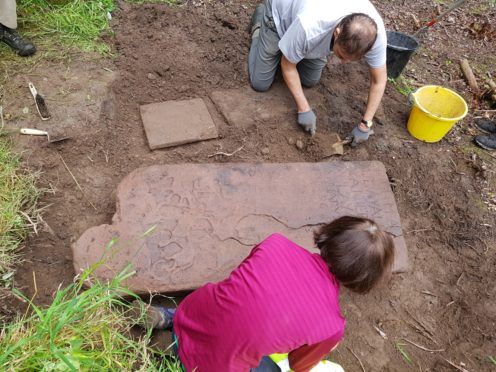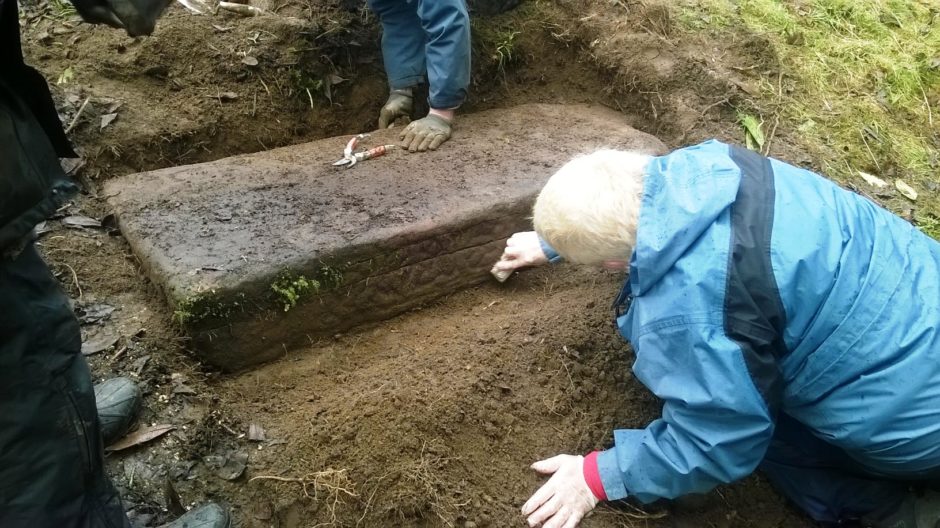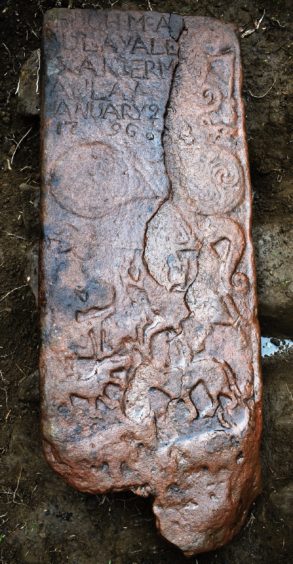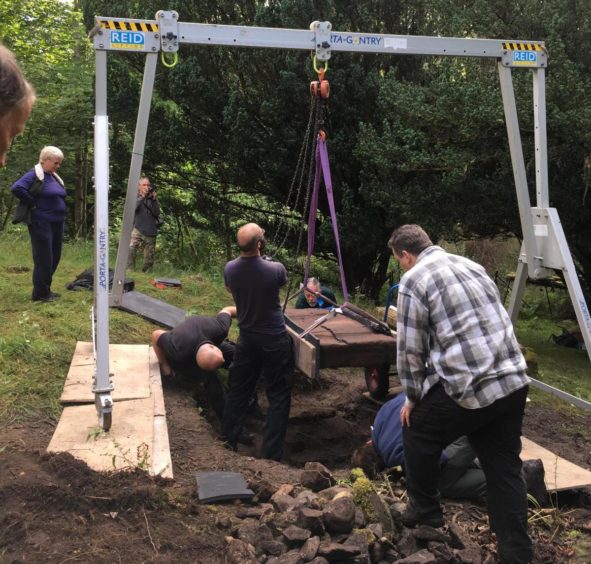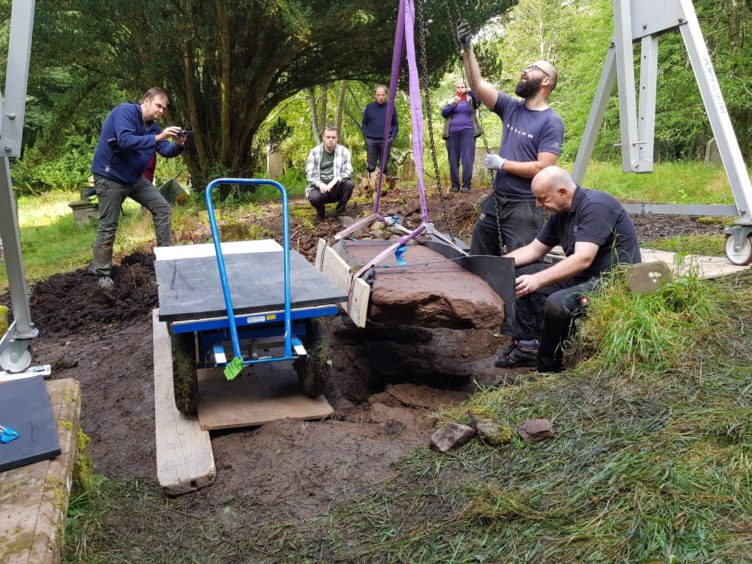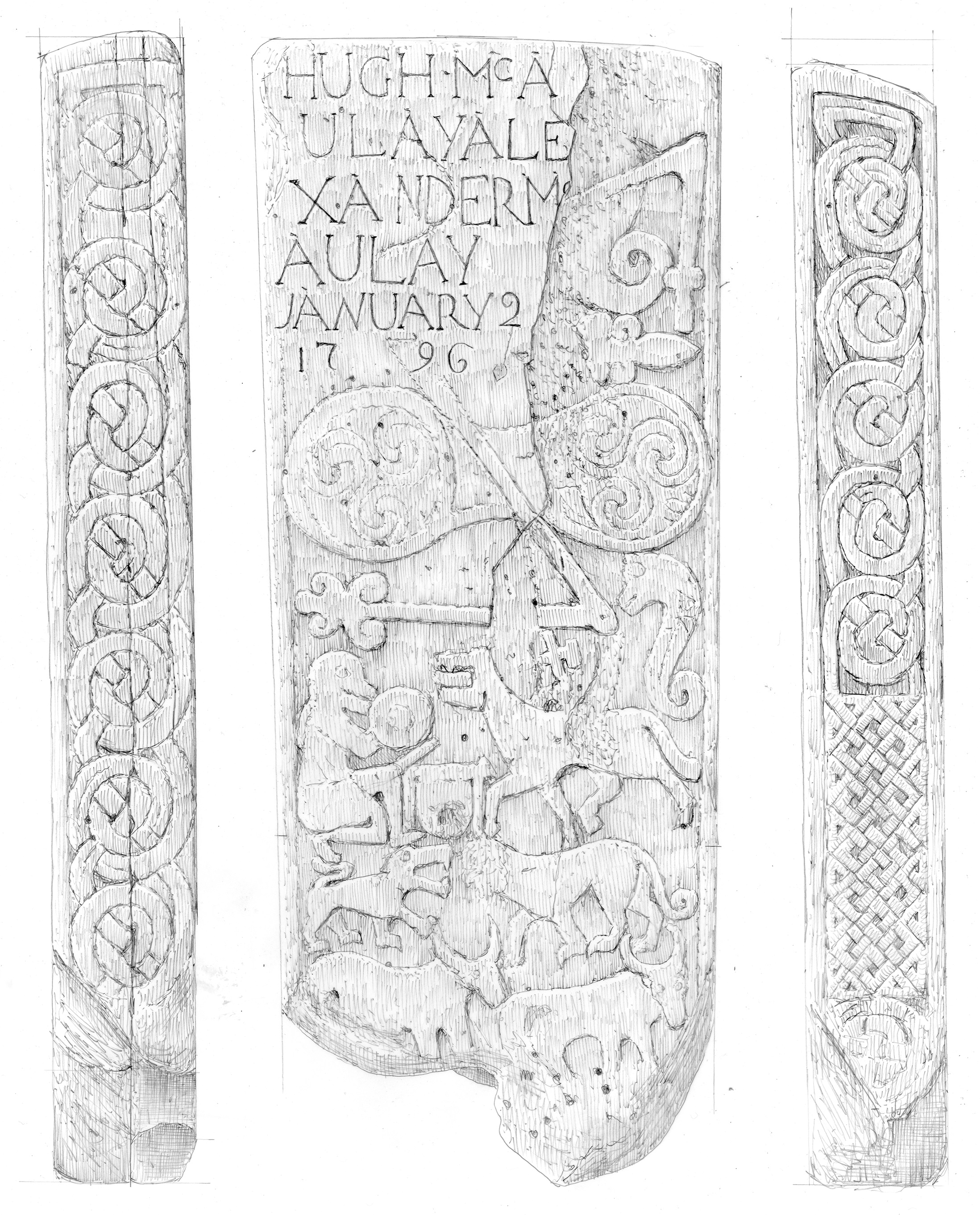A rare Pictish stone dating back 1,200 years has been uncovered by archaeologists during a dig on an early Christian church site in Easter Ross.
The exciting find has been hailed by experts as being of “national importance” and is thought to have originally stood at over six feet in height.
The stone, which is decorated with a number of Pictish symbols, was first recognised earlier this year by Anne MacInnes of the North of Scotland Archaeological Society while undertaking a survey of the site.
She said: “I was clearing vegetation when I spotted the carving. I really couldn’t believe what I was seeing.”
The discovery has been verified by archaeologists hailing from Highland Council and Historic Environment Scotland before it was safely removed by specialist conservators on Thursday.
It will now be conserved with a view to ultimately putting it on permanent public display at a Highland museum or other suitable venue.
John Borland, president of the Pictish Arts Society, said: “The discovery of the top half of a large cross slab with Pictish symbols is of national importance.
“The find spot – an early Christian site in Easter Ross – is a new location for such sculpture so adds significant information to our knowledge of the Pictish church and its distribution.
“This new discovery will continue to stimulate debate and new research.”
The massive stone, which was reused as a grave marker in the 1970s, measures in at five feet in length, four feet in width and two feet in depth.
Several mythical beasts, including an animal-headed warrior complete with sword and shield, are carved into the masonry, alongside an oxen, a double-disc and a ‘z rod’ symbol.
Detail of the carvings on the reverse side of the stone are not yet known. But experts believe that it is likely to present a large ornate Christian cross based on similar findings.
The discovery is one of only about 50 complete or near-complete Pictish cross-slabs known in the world and the first to be discovered on the Scottish mainland for many years.
Kirsty Cameron, the Highland Council Archaeologist, said “This is a once-in-a-lifetime find and what started as a small recording project has resulted in the identification of not only this important stone but also that the site itself must be much older than anyone ever expected.
“All credit goes to the local archaeologists for immediately recognising the importance of the stone and putting plans in place for securing its future.”
Mr Borland added: “Some of the best examples of complete cross slabs can be found in Easter Ross. However, this new carving appears to have little in common with its relatively near neighbours. Of course, the cross side is as yet unseen and when it is visible, this analysis may change.
“But for the time being, some of the figurative carving on the symbol-bearing side appears to have more in common with distant counterparts as far south as Perthshire.
“This may tell us something of the complex web of influence between important ecclesiastical sites in one part of Pictland and their far-flung satellite churches elsewhere.”
